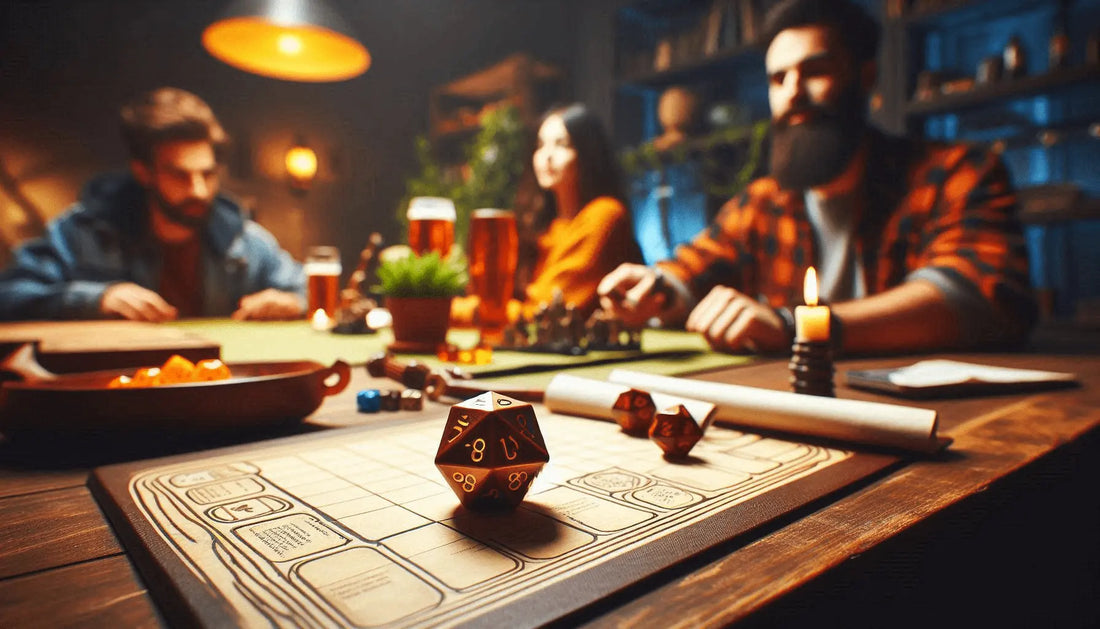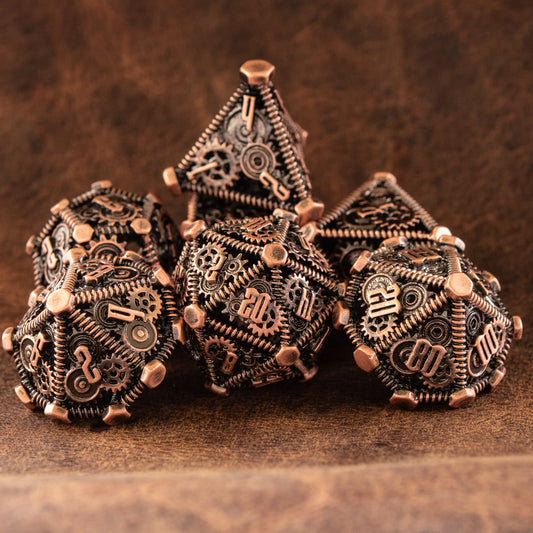How to Roll Dice in D&D: A Beginner's Guide
Introduction
Dungeons & Dragons (D&D) is a classic tabletop role-playing game (RPG) where players create and control characters to embark on adventures. The game is led by a Dungeon Master (DM), who describes the world, sets scenarios, and plays non-player characters (NPCs). Players control their characters, exploring, fighting, and interacting within this fantasy setting. One of the core mechanics of D&D is rolling dice to determine the outcomes of actions. This guide will walk you through the basic rules, explain essential terms, and show you how to roll dice in D&D effectively.
Basic Rules
Character Creation
Each player character (PC) in D&D has several key elements:
- Race: Determines the character's basic traits and abilities, such as human, elf, dwarf, etc.
- Class: Defines the character's skills and abilities, such as fighter, wizard, rogue, etc.
- Ability Scores: Six primary attributes that define a character’s capabilities: Strength, Dexterity, Constitution, Intelligence, Wisdom, and Charisma. Each attribute has a value and a corresponding modifier.
- Background: Provides additional skills, proficiencies, and backstory.
- Equipment: Initial gear, including weapons, armor, and other items, based on class and background.
Gameplay
D&D gameplay consists of several key phases:
- Exploration: Players explore dungeons, cities, or wilderness, searching for treasures, information, or completing quests.
- Interaction: Players engage in conversations with NPCs to gather clues, trade, or negotiate.
- Combat: When encountering hostile creatures or traps, the game shifts to turn-based combat using specific rules.
Actions and Checks
Players need to perform various checks to determine the success of their actions. Dice rolls usually determine the outcomes:
- Skill Checks: Players roll a d20, add the relevant ability modifier and skill proficiency, and compare the result to a Difficulty Class (DC) set by the DM. If the total equals or exceeds the DC, the action succeeds.
- Attack Rolls: Players roll a d20, add their attack bonus, and compare the result to the target’s Armor Class (AC). If the total equals or exceeds the AC, the attack hits.
- Saving Throws: When subjected to certain effects (e.g., spells, traps), players roll a d20, add the relevant saving throw modifier, and compare the result to the DC set by the DM. If the total equals or exceeds the DC, they resist the effect.
Key Terms Explained
Abilities
- Strength (STR): Affects melee attacks and carrying capacity.
- Dexterity (DEX): Affects ranged attacks, initiative, and defense.
- Constitution (CON): Affects hit points and stamina.
- Intelligence (INT): Affects learning and knowledge checks.
- Wisdom (WIS): Affects perception and willpower.
- Charisma (CHA): Affects social interactions and spellcasting for certain classes.
Dice
- d4: Four-sided die
- d6: Six-sided die (common standard die)
- d8: Eight-sided die
- d10: Ten-sided die
- d12: Twelve-sided die
- d20: Twenty-sided die (most commonly used)
- d100: Percentile dice (two ten-sided dice, one for tens and one for units)
Just like this
Check Types
- Skill Check: Determines the success of performing a skill.
- Attack Roll: Determines whether an attack hits a target.
- Saving Throw: Determines whether a character resists an effect.
How to Roll Dice in D&D
1. Determine the Type of Dice
Based on the action you’re performing, choose the appropriate dice. Common scenarios and their corresponding dice include:
- Attack Rolls: Use a d20.
- Skill Checks: Use a d20.
- Damage Rolls: Use the dice specified by the weapon or spell (e.g., d6, d8).
- Saving Throws: Use a d20.
2. Add Modifiers
After rolling the dice, add relevant modifiers from your character's abilities, skills, or equipment. For example:
- Attack Roll: d20 + attack modifier (based on Strength or Dexterity).
- Skill Check: d20 + skill modifier (based on the relevant ability and proficiency).
- Damage Roll: Weapon damage dice + Strength or Dexterity modifier (depending on weapon type).
- Saving Throw: d20 + saving throw modifier (based on the relevant ability).
3. Compare the Result
Compare the modified roll result to the target number (usually set by the DM):
- Attack Roll: Compare to the target’s AC. If equal to or higher, the attack hits.
- Skill Check: Compare to the DC. If equal to or higher, the action succeeds.
- Saving Throw: Compare to the DC. If equal to or higher, the effect is resisted.
Advanced Techniques
Advantage and Disadvantage
In certain situations, characters may have advantage or disadvantage:
- Advantage: Roll two d20s and take the higher result.
- Disadvantage: Roll two d20s and take the lower result.
Rerolling and Extra Dice
Some abilities or traits allow rerolls or additional dice:
- Halfling Luck: If a halfling rolls a 1 on a d20, they can reroll.
- Fighter's Critical Hit: Some abilities allow rolling extra damage dice on a critical hit.
Percentile Dice (d100)
For some special cases (e.g., determining random events), use percentile dice. Roll two d10s, one for tens and one for units. For example, rolling a 3 and a 7 results in 37.
Conclusion
Understanding how to roll dice is fundamental to playing D&D. As you delve deeper into the game, you’ll find that dice rolls are more than just numbers—they’re integral to your character's story. From the basic d20 rolls to complex rerolls and advantage/disadvantage mechanics, every roll adds excitement and unpredictability. We hope this guide helps you embark on epic adventures in the world of D&D!






